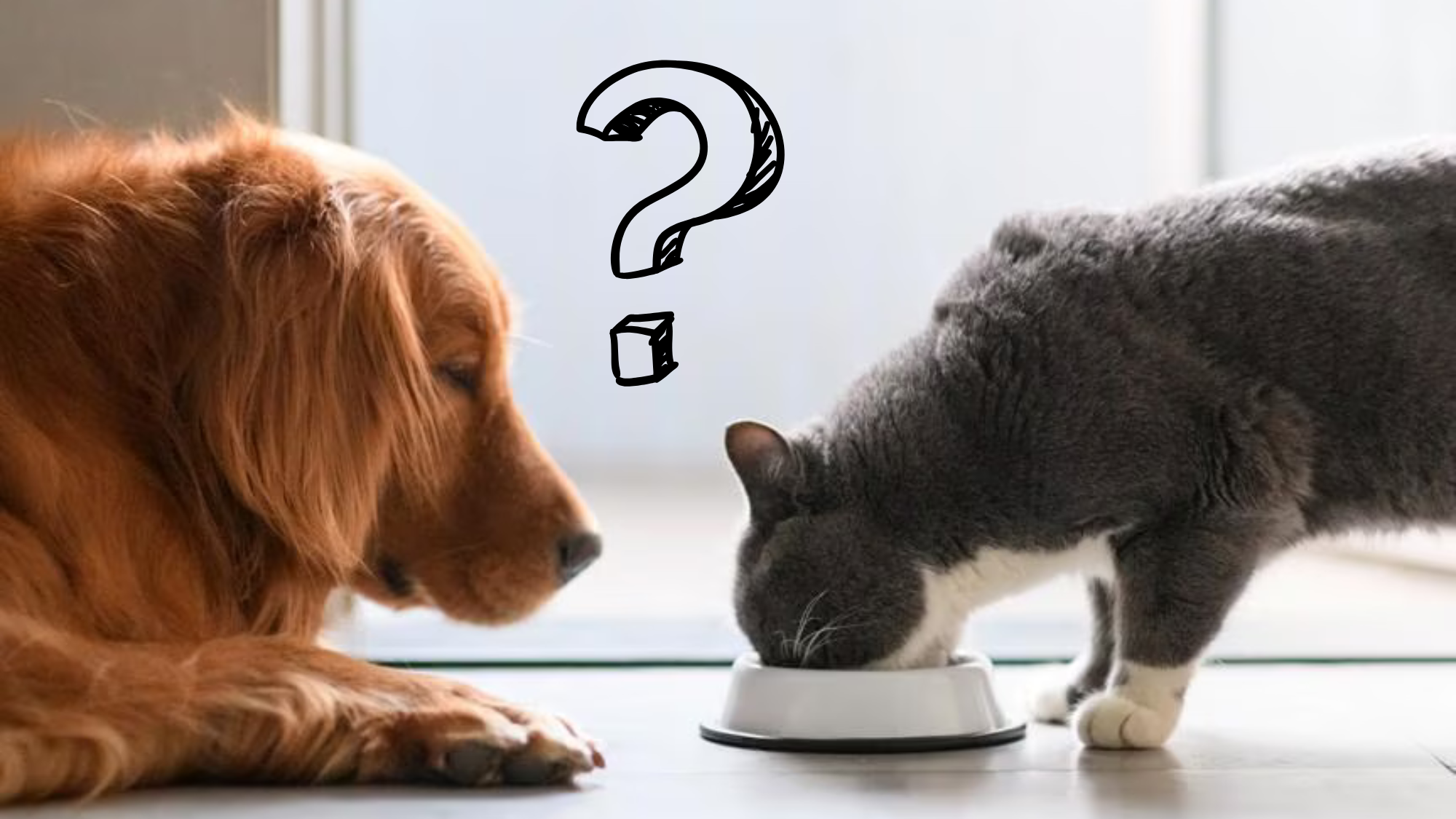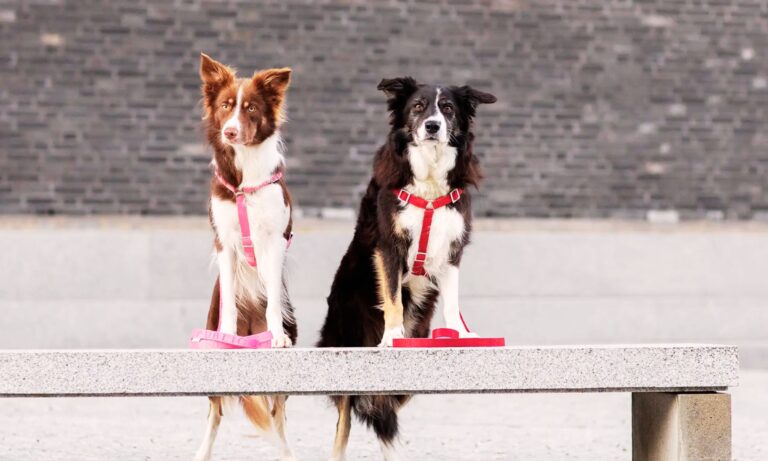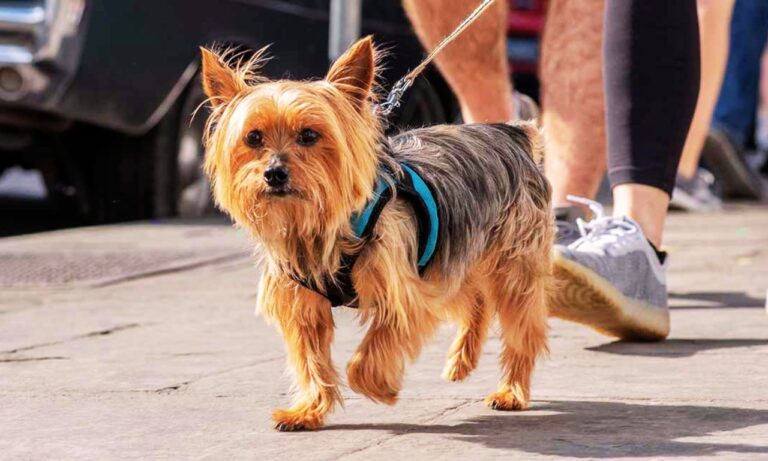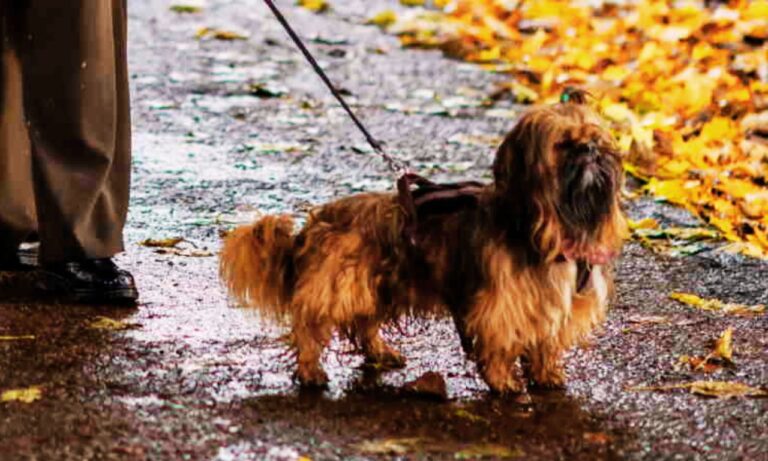It’s not uncommon for pet owners to wonder whether it’s safe for their dog to eat cat food. Although both dogs and cats are beloved household companions, their nutritional needs are remarkably different. I’ll explore the differences between dog and cat food, examine the potential risks of feeding your dog cat food, and discuss scenarios in which a dog might inadvertently eat cat food. We’ll also provide practical advice on what to do if your dog has consumed cat food and when you should consult a veterinarian. So, can a dog eat cat food.
To discover what activities bring joy to Australian Cattle Dogs, check out this detailed guide on What Do Australian Cattle Dogs Love.
Blog Highlights
ToggleCan a Dog Eat Cat Food | The Fundamental Differences in Nutritional Needs
Dogs and cats have evolved with different dietary requirements. Cats are obligate carnivores, meaning they require a diet rich in animal proteins and certain nutrients found primarily in meat.
Dogs, on the other hand, are omnivores and can thrive on a varied diet that includes proteins, vegetables, and grains. This distinction is crucial because the nutritional profiles of cat food and dog food reflect these evolutionary differences.
Protein and Fat Levels
- Cat Food: Cat food generally contains higher levels of protein and fat. Cats require more protein to maintain their muscle mass and energy levels, along with essential fatty acids like arachidonic acid, which dogs can produce on their own.
- Dog Food: Dog food is formulated to provide a balanced mix of proteins, carbohydrates, fats, and fiber to support an omnivorous diet. The protein and fat levels are adjusted to meet a dog’s energy needs without promoting obesity.
Vitamins, Minerals, and Other Nutrients
- Cat Food: Cat food often has increased amounts of vitamins and minerals that are critical for feline health. For example, cats need a dietary source of taurine—a nutrient that dogs can synthesize in sufficient quantities.
- Dog Food: While dog food is balanced for canine health, it does not require the extra enrichment found in cat food. Feeding a dog food with elevated levels of certain vitamins and minerals can disrupt their delicate nutrient balance.
Potential Risks of Feeding Dog Cat Food
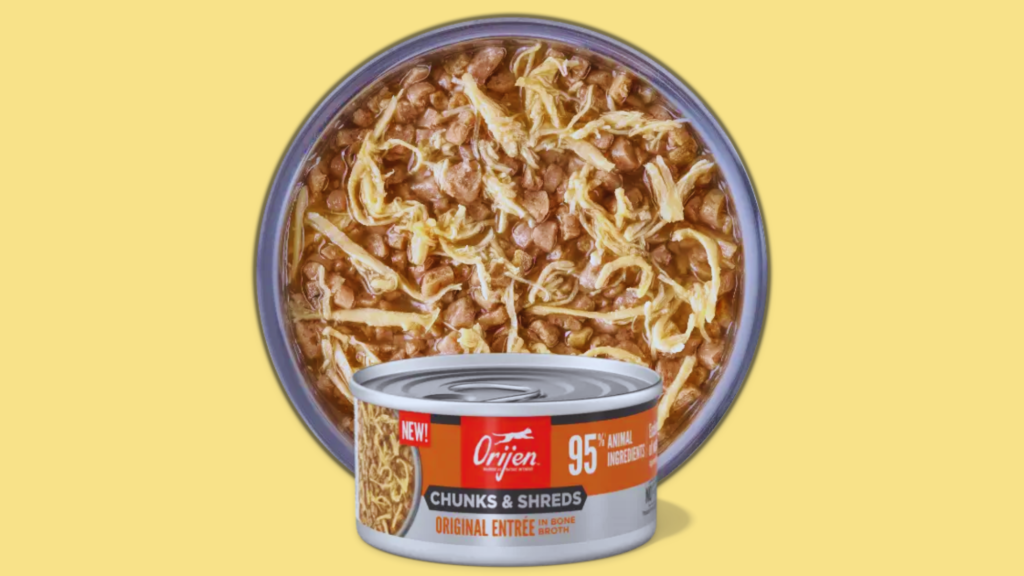
Short-Term Effects
If a dog accidentally consumes a small amount of cat food, the immediate risk is usually low. Most dogs can tolerate a one-off meal of cat food without serious health issues. However, even a single meal can lead to temporary gastrointestinal upset in some dogs, manifesting as:
- Vomiting or Diarrhea: The higher fat content in cat food may be too rich for a dog’s digestive system, causing nausea or diarrhea.
- Stomach Discomfort: Dogs unaccustomed to the richer formula of cat food might experience stomach upset or indigestion.
Long-Term Health Concerns
Regularly feeding your dog cat food, however, is not advisable due to several key concerns:
- Nutritional Imbalance: Consistently consuming cat food can lead to deficiencies or excesses in nutrients. Dogs may not get enough of the carbohydrates and fiber they need, and the excess protein and fat can contribute to weight gain or pancreatic issues.
- Obesity: The high-calorie, high-fat content of cat food can quickly lead to obesity in dogs, particularly in those that are less active. Obesity increases the risk of numerous health problems, including joint issues, heart disease, and diabetes.
- Digestive Disturbances: Over time, the richer composition of cat food may cause chronic digestive disturbances in dogs, affecting their overall well-being.
To find the ideal collar size for your Australian Cattle Dog, check out this guide on What Size Collar for Australian Cattle Dog for helpful tips on measurement and fit recommendations.
When Might a Dog Eat Cat Food?
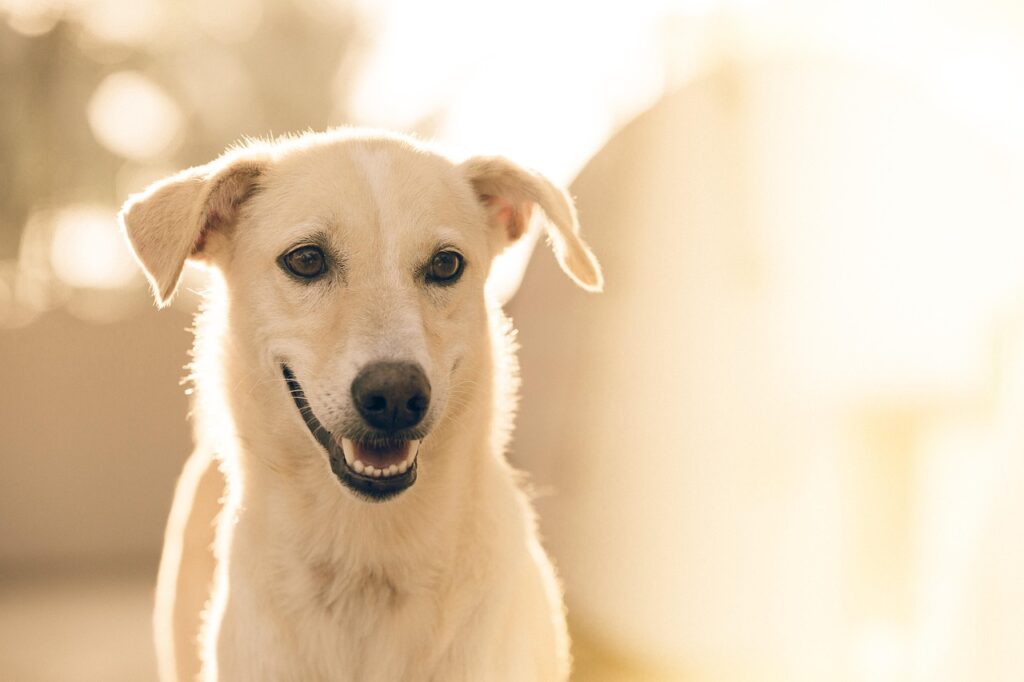
Accidental Consumption
It’s not uncommon for dogs to sneak a taste of cat food. Whether it’s a stray bowl left unattended or a curious pup exploring the kitchen, many dogs have sampled cat food at least once. In these situations, occasional accidental ingestion is generally not harmful. However, it’s important to ensure that it doesn’t become a habit.
Intentional Eating
Some dogs may develop a taste for cat food due to its appealing aroma and flavor. If a dog begins actively seeking out cat food, this could indicate boredom with their regular diet or simply a preference for the richer taste. In such cases, it’s essential to discourage the behavior to maintain proper nutritional balance.
Special Circumstances
There may be special circumstances where a veterinarian recommends a change in diet due to specific health needs. However, substituting cat food for a dog’s regular food is rarely advised due to the significant differences in nutritional content.
Comparing the Nutritional Profiles: A Quick Look
Below is a table that summarizes some of the key nutritional differences between typical cat food and dog food:
| Nutrient/Factor | Cat Food | Dog Food |
| Protein Content | Higher; designed for obligate carnivores | Moderate; balanced for omnivores |
| Fat Levels | Higher; rich in essential fatty acids | Lower; formulated for balanced energy levels |
| Taurine | Must be supplemented; essential for cats | Not typically required in high amounts |
| Caloric Density | Generally higher due to fat and protein | Lower to moderate; supports balanced energy |
| Carbohydrates | Minimal; cats do not require high carbohydrate intake | Moderate; necessary for energy and fiber |
This table illustrates why feeding dog food to a cat is inappropriate—and why feeding cat food to a dog, especially on a regular basis, can lead to nutritional imbalances.
Find out what color collar looks best on a Rottweiler to complement their bold appearance and highlight their unique features.
What to Do If Your Dog Eats Cat Food

Monitor Your Pet
If your dog has eaten a small amount of cat food, keep an eye on them for any signs of distress. Watch for symptoms such as vomiting, diarrhea, or changes in behavior. In most cases, a single meal won’t cause lasting harm, but it’s important to monitor your dog’s condition closely.
Adjust Future Feeding
If you find that your dog is showing a preference for cat food, take steps to secure the cat food or feed your pet in separate areas. Ensuring that each pet has its designated feeding space can prevent cross-contamination and accidental ingestion.
Consult Your Veterinarian
If your dog shows persistent symptoms after consuming cat food or if you’re concerned about nutritional imbalances, contact your veterinarian. They can advise you on whether any adjustments to your dog’s diet or additional supplements are necessary.

Preventing Future Incidents
Secure Feeding Areas
To prevent accidental consumption, set up separate feeding stations for your pets. Feeding cats and dogs in different rooms or at different times can minimize the risk of cross-feeding.
Store Food Properly
Keep cat food in a secure, easily accessible container that only your cat can access. Proper storage can prevent your dog from getting into cat food when you’re not around.
Establish Routine and Discipline
Creating a regular feeding schedule can help both pets understand their eating times. This routine reduces the likelihood of a dog sneaking food from the cat’s bowl and helps maintain a balanced diet for each animal.
Educate and Train

Training your dog to leave the cat’s food alone can be an effective preventive measure. Using positive reinforcement when your dog obeys commands can help minimize the chances of them scavenging cat food.
Learn what size collar for a Rottweiler is ideal by following this detailed guide to ensure a perfect fit for your dog’s comfort and safety.
Frequently Asked Questions
Q: Is it okay for my dog to have a little cat food now and then?
A: An occasional nibble is usually not harmful for most dogs. However, it should remain an infrequent event. Regular consumption can lead to nutritional imbalances and other health issues.
Q: What if my dog loves the taste of cat food?
A: If your dog shows a strong preference for cat food, it’s important to discourage this behavior. Focus on making your dog’s food more appealing and ensure they have a variety of healthy treats designed specifically for dogs. Consult your veterinarian if you’re concerned about this behavior.
Q: Can a dog’s digestive system handle cat food?
A: While a dog’s digestive system is capable of processing cat food in small amounts, the formulation is not ideal for dogs over the long term. The higher fat and protein levels can be too rich for many dogs, potentially causing digestive upset or more serious health issues if consumed regularly.
Q: Should I switch my dog’s food if they accidentally eat cat food?
A: Not necessarily. A one-time occurrence usually doesn’t require a change in diet. However, if your dog has ingested a significant amount or if it becomes a regular habit, you should consult your veterinarian for guidance on whether dietary adjustments are needed.
Final Thoughts
The short answer to “Can a dog eat cat food?” is that while a dog can consume a small amount of cat food without immediate harm, it is not an appropriate or balanced long-term diet for them. Cat food is specifically formulated to meet the high protein and fat requirements of cats, which differ significantly from the nutritional needs of dogs.
Regularly feeding your dog cat food can lead to digestive issues, weight problems, and other health concerns due to the nutritional imbalances. Hope so, now you know the answer to: Can a dog eat cat food?
You can learn whether Dachshunds need special collars and find expert recommendations in this article: Do Dachshunds Need Special Collars.
It is important to remember that each pet has unique dietary needs. While a stray taste of cat food may not cause serious harm, it’s essential to maintain consistency in your dog’s diet by providing food that is specifically designed for them.
Taking preventive measures—such as establishing separate feeding areas, securely storing pet food, and training your dog to avoid the cat’s food—can help avoid these mix-ups.

